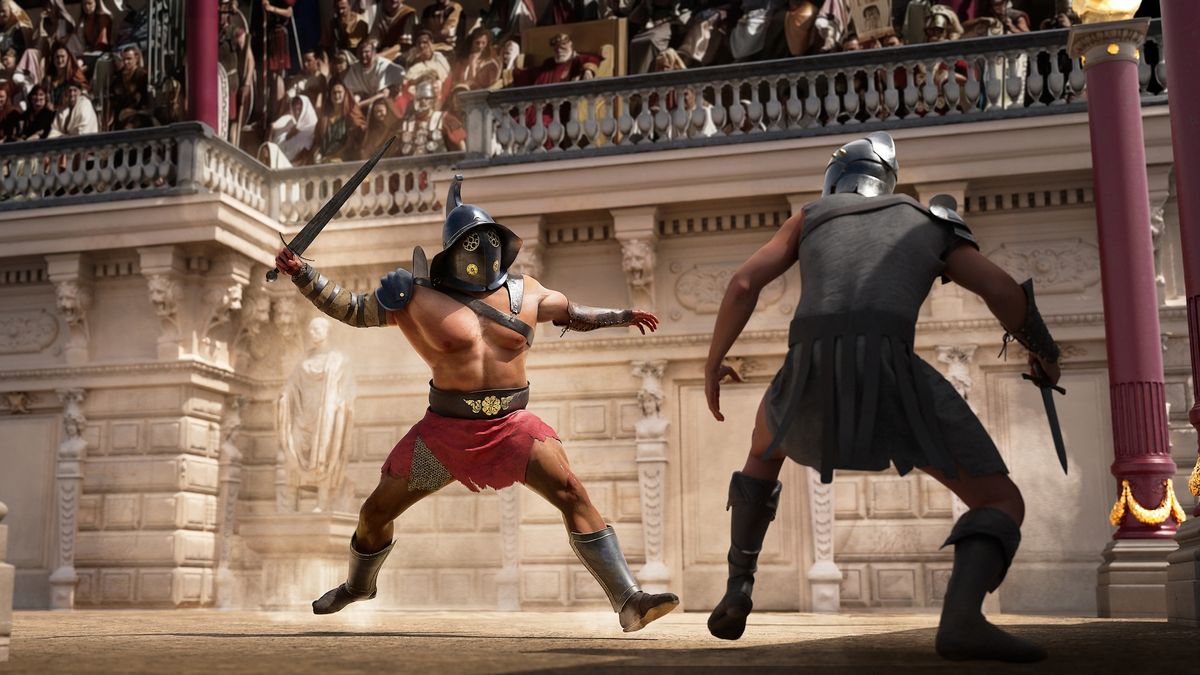Popular media, such as the 2000 film “Gladiator,” often depict Roman gladiators in gory battles that don’t end until at least one of the fighters is slain. But in real life, did gladiators really fight to the death?
In fact, sometimes they did, but not always, experts told Live Science. Alfonso Manas, a researcher at the University of California, Berkeley who has studied gladiators extensively, said evidence indicates that the mortality rate of gladiators varied considerably over time.
For instance, tomb paintings dating to the fourth century B.C. at the site of Paestum a Greek city in Italy that eventually came under Roman rule, show that the “gladiators are receiving terrible wounds,” such as spears getting stuck in their opponent’s head, that would have been fatal, Manas told Live Science in an email. This suggests that many early gladiator fights ended in the death of one or both fighters.
Gladiator games were reformed after 27 B.C., causing the death rate to decrease, Manas noted. These reforms happened during the reigns of Emperor Augustus (circa 30 B.C. to A.D. 14) and Tiberius (circa 14 to 37) . “In the 1st century A.D. we know [the] death rate perfectly: the study of the results of gladiator fights painted on the walls of Pompeii say that out of 5 fights, one ended with the death of the loser,” Manas said, adding that this death rate probably remained similar during the second century A.D. Although many gladiators were slaves, with the drop in mortality, some free individuals volunteered to become gladiators, Manas added.
We don’t know the specific rules that changed after 27 B.C. However, evidence does indicate that a gladiator could surrender by dropping their shield and extending their index finger, Manas said. Additionally, there was a “summa rudis” — a referee — who could enforce rules and stop the fight if a gladiator was on the verge of being killed. If the person holding gladiator fights granted it, the loser would be allowed to leave the arena without further harm. If the person hosting the event insisted on the gladiator being killed, they would have to pay a large sum to the person who provided the gladiators.
“Gladiators could be rented from their owners by magistrates who wanted to put on games, and there is some evidence of these contracts that shows that if a gladiator was returned severely injured — or killed outright — the lease of the gladiator would be converted to a sale [and] the price could increase by something like 50 times the original contract cost,” Virginia Campbell, a lecturer of classical studies at The Open University, told Live Science in an email.
This rate of death appears to have increased in the third century A.D., Manas noted. “A greater taste for cruelty became popular among the people, with fights where the loser was not allowed to ask for the pardon becoming customary again,” he said. “The sources of the 3rd century suggest that one out of two fights ended with the death of the loser.”
This high rate of death may have continued into the fourth century; mosaics at the site of Torrenova show the losers of a series of gladiator fights dead, Manas noted. Gladiator games declined in the fifth century, and the remaining fights would not likely have been to the death, he said.
Untrained prisoners
Not everyone who went into the arena would have been gladiators, who had been trained and were expected to fight other people. Some were untrained prisoners who had been sentenced to death by being eaten by wild animals. These prisoners “had no training, frequently no or only the most rudimentary of weapons, and were expected to die,” Campbell said. This usually ended in the deaths of the untrained prisoner.
The prisoners would have been “facing down likely starved animals in the hopes the animals would rip them apart,” Campbell said. “These deaths would be the warm up act prior to the actual trained gladiators fighting.”
Because the prisoners were not trained and had little or no weapons, they were relatively cheap. “It not only was relatively cheap fodder for deadly entertainment, but the practice of putting convicts in the arena was seen as a sort of deterrent — don’t commit crimes or you could end up here,” Campbell said. “Entertainment and social control in one fell swoop.”


